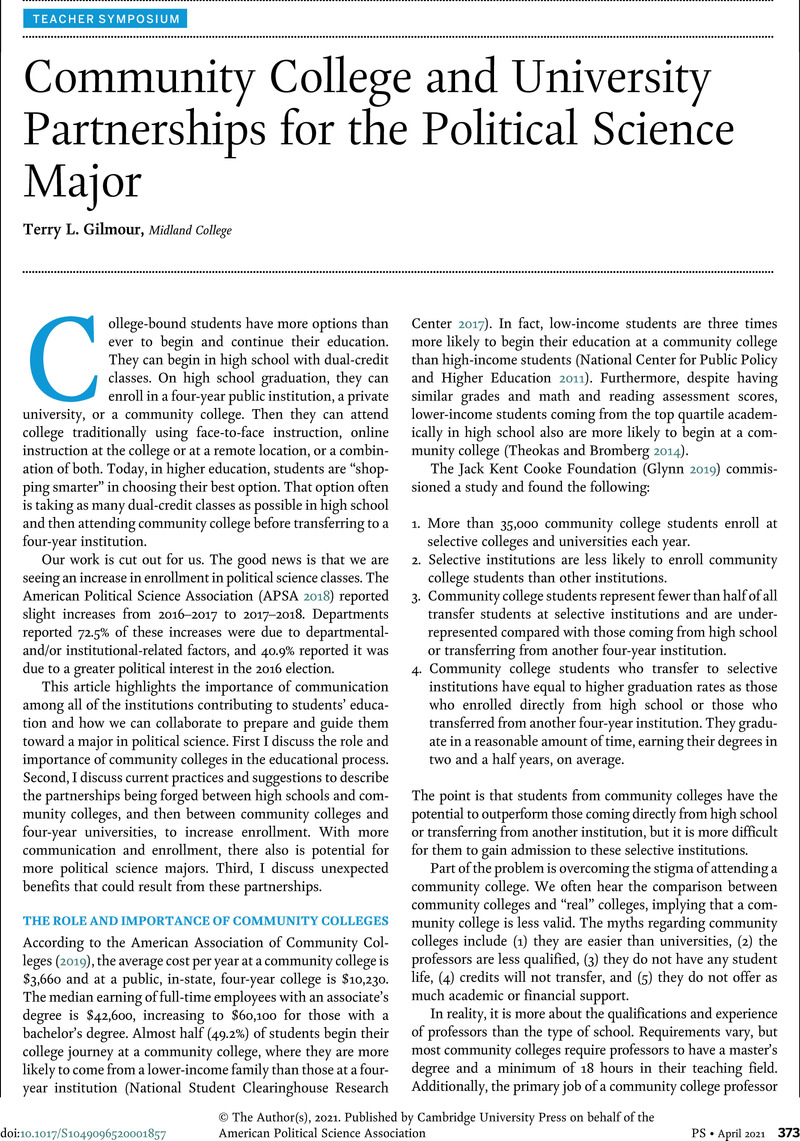Crossref Citations
This article has been cited by the following publications. This list is generated based on data provided by Crossref.
Bozonelos, Dino
Azul, Amy
and
Atmore, Nicholas
2024.
Succeeding in American Government: The Benefits of Supplemental Instruction in Political Science at a Hispanic-Serving Institution.
Journal of Political Science Education,
p.
1.



